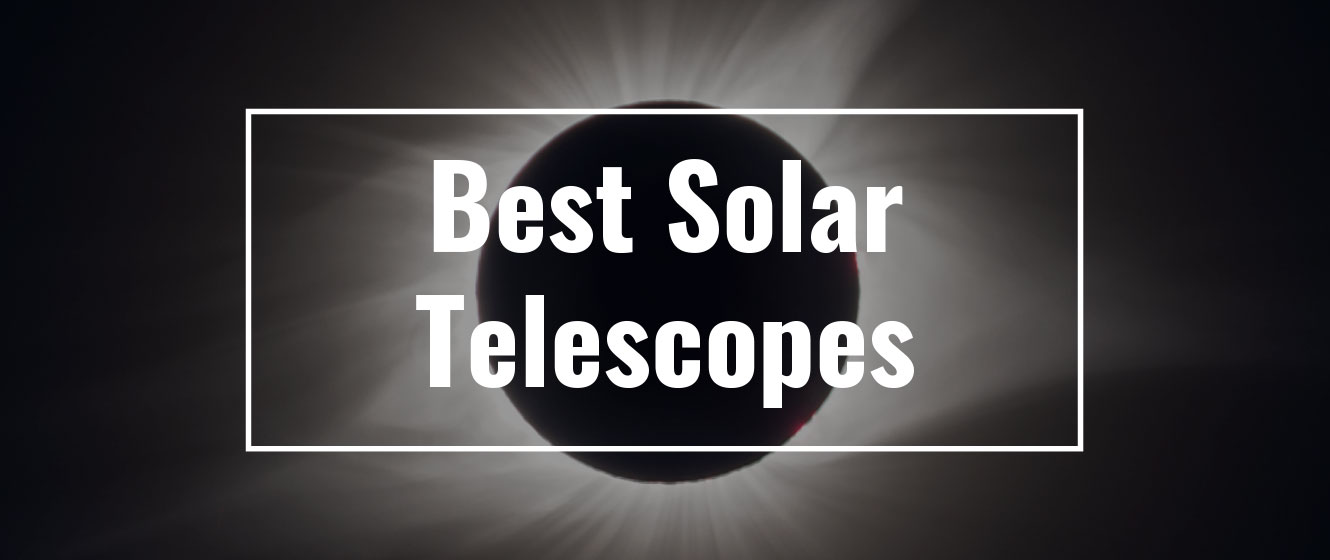
In the night sky, we can see millions of stars. But no star is quite as important as our own – the Sun. As the glowing heart of our solar system, the Sun has captivated humans for millennia, inspiring awe, mythology, and scientific inquiry. Its radiant brilliance and dynamic nature give us light and energy to live. Beyond its vital role in sustaining life on Earth, the Sun offers a mesmerizing spectacle for those who turn their gaze skyward.
Amateur astronomers who view the Sun through a telescope are in for a treat. Instead of being blinded by the intense light from the Sun, one can view the Sun in all its glory. Those with a simple mylar filter can view the Sun in its natural white light – the photosphere. This is the lowest layer of the Sun’s atmosphere. In the photosphere, one can observe solar granules and sunspots. But those with a larger telescope designed to peer into different wavelengths from the Sun can view prominences, flares, and different layers of the Sun.
The Different Layers of the Sun
The innermost layers of the Sun cannot be seen with a telescope. The core of the Sun, reaching temperatures of a blistering 30,000,000 degrees Fahrenheit, is where nuclear fusion occurs, which generates light and energy. From here, light travels for millions of years to reach through the radiative and convective zones before being released through the photosphere.
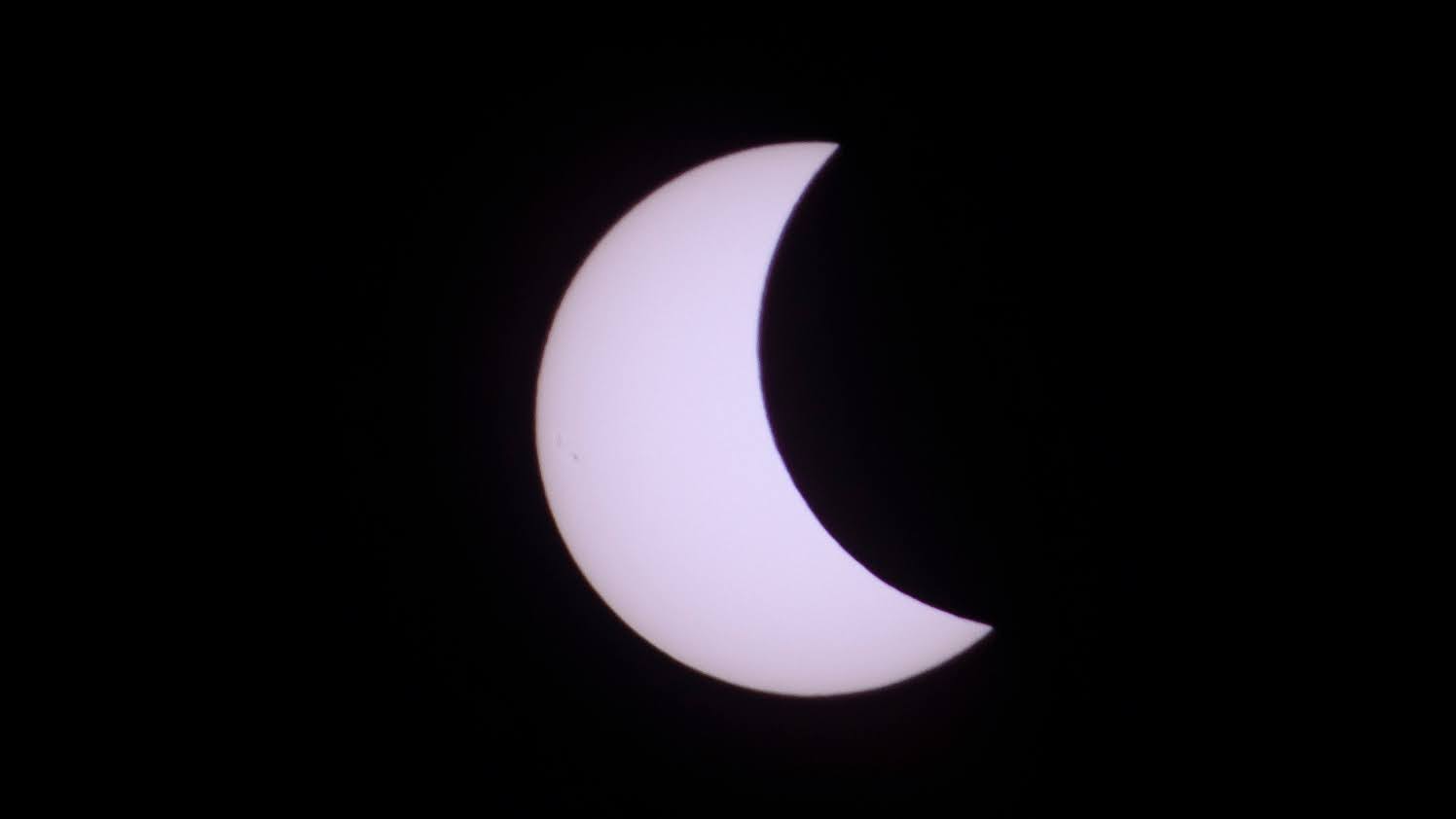 Click to Enlarge Image
Click to Enlarge Image
The photosphere is the first layer of the Sun that you can actually see; it’s the visible layer of the Sun and is the brightest. Because the Sun’s atmosphere is transparent to visible light, the outer layers of the Sun’s atmosphere do not block out the view. All white light solar filters and telescopes will see the photosphere - it’s here where sunspots, solar granules, and faculae can be observed. The next layer of the Sun is the chromosphere, the first layer of the Sun’s atmosphere where solar prominences can be observed. Prominences are large, bright features extending outwards from the Sun’s surface. They are anchored in the photosphere but can reach a size greater than Jupiter's.
Finally, the next layer of the Sun you can see is the corona - the outermost layer of the Sun's atmosphere, extending millions of kilometers into space. It is most easily observed during a total solar eclipse when the Moon blocks the bright photosphere, revealing the fainter corona. However, because of the intense brightness of the Sun, no solar telescope on the amateur market can observe the Sun’s corona.
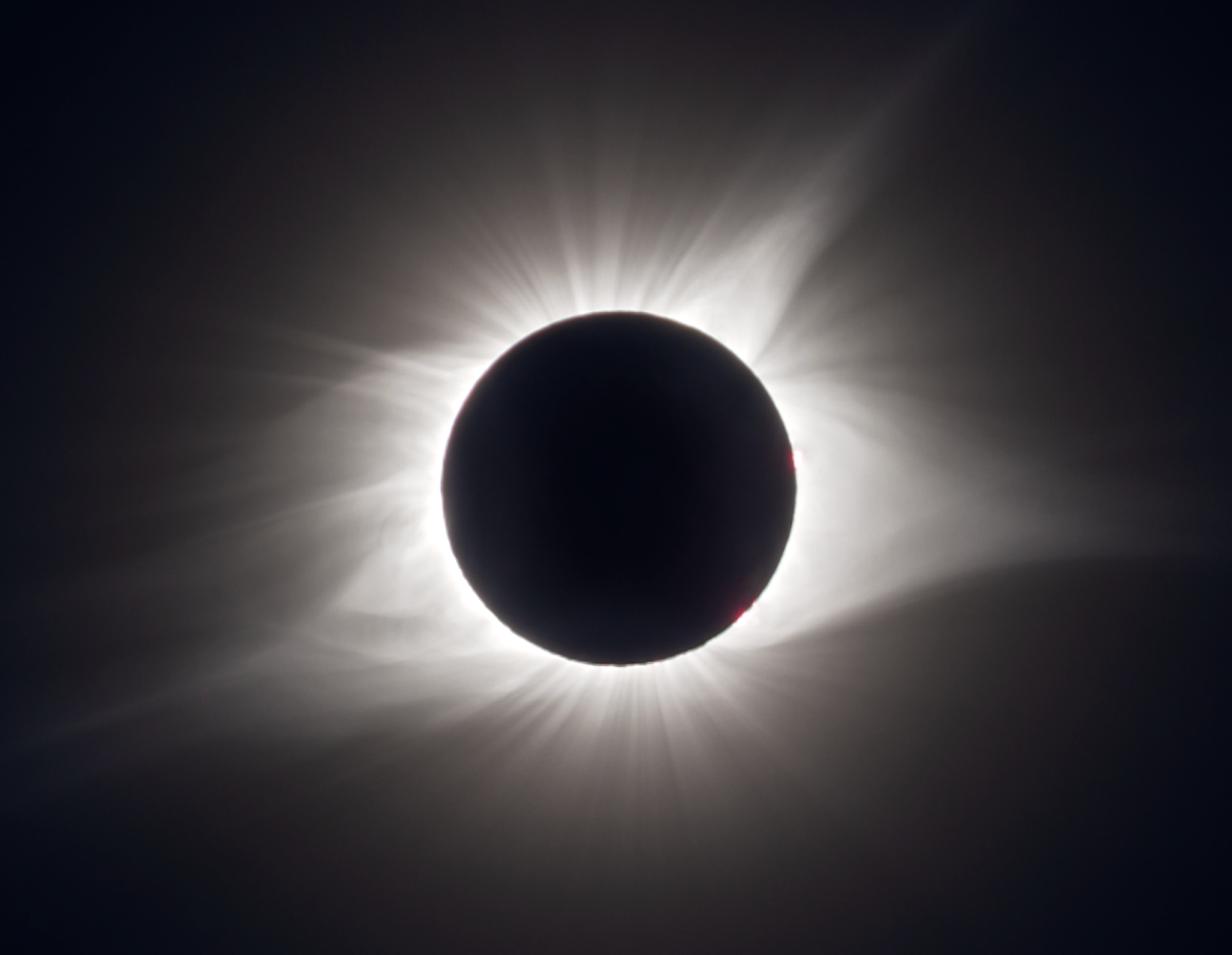 Click to Enlarge Image
Click to Enlarge Image
Why You Need a Solar Telescope
NOTE: AT NO POINT SHOULD YOU LOOK AT THE SUN WITHOUT A SOLAR FILTER ON YOUR TELESCOPE!!
Pointing your telescope at the Sun without adequate solar filters or specialized equipment poses a severe risk both to the observer and the telescope itself. The Sun's intense brightness can cause irreparable damage to your eyes, leading to permanent vision impairment or even blindness. Telescopes amplify sunlight, concentrating it into a powerful beam that can quickly burn the delicate tissues of one’s eyes. Additionally, the intense heat generated by focusing sunlight through the telescope can also damage the telescope's optics, leading to costly repairs or rendering the equipment unusable. Even a brief, unprotected glimpse of the Sun through a telescope can result in immediate and irreversible harm.
Because of this, solar telescopes are designed to look at the Sun in a way that the normal eye cannot see due to the incredible light. White light solar filters and telescopes equipped with hydrogen-alpha (H-alpha) filters represent two distinct yet equally fascinating approaches to observing the Sun, each offering unique insights into the solar phenomena. White light solar filters, available with either solar film or glass, provide a safe and accessible way for enthusiasts to explore our star. These filters enable observers to witness sunspots, solar granulation, and even occasional transits of planets across the photosphere. The simplicity and affordability of white light filters make them an excellent entry point for amateur astronomers and educators seeking to introduce others to solar observation.
On the other hand, telescopes equipped with H-alpha filters open a gateway to a more nuanced and intricate solar realm. H-alpha filters isolate a specific wavelength of light emitted by hydrogen atoms in the solar atmosphere, allowing observers to peer directly into the Sun's chromosphere. This specialized equipment unveils mesmerizing features such as solar prominences, filaments, and eruptive solar flares, providing a deeper understanding of the Sun's complex and ever-changing dynamics. While H-alpha solar telescopes are often pricier and require careful handling to avoid damage, the rewards for dedicated solar enthusiasts and researchers are substantial. The choice between white light solar filters and H-alpha-equipped telescopes ultimately depends on your goals, from appreciating the Sun's general features to delving into the details of its turbulent and fascinating outer layers.
Best Solar Telescope for Beginners
Quick to set up, easy to center the Sun, and will deliver stunning, full aperture views of the Sun - the Celestron 50mm EclipsSmart telescope is a great option for beginners. This telescope is designed for safe and detailed solar observation. This is done through the telescope’s fully coated 50mm glass optics that are permanently mounted to the front of the telescope. The Solar Safe technology in EclipSmart filters out 99.999% of the intensive visible light, providing protection against ultraviolet and infrared light that would otherwise damage your eyes.
This telescope would be best for those who are just interested in observing the Sun’s outermost layer, the photosphere. This is where all sunspots and solar granules can be most easily seen. Additionally, this telescope is a great option for partial solar eclipses and planetary transits of Mercury. The telescope is mounted on a stable photo-tripod style altazimuth mount that can be easily adjusted to any location in the sky where the Sun may be located. Included is a zero-power solar safe finder, which will allow you to locate the Sun in a safe manner. Additionally, this telescope is great for active observers who want a portable, easy-to-use, and quick-to-set-up solar telescope for your next outing.
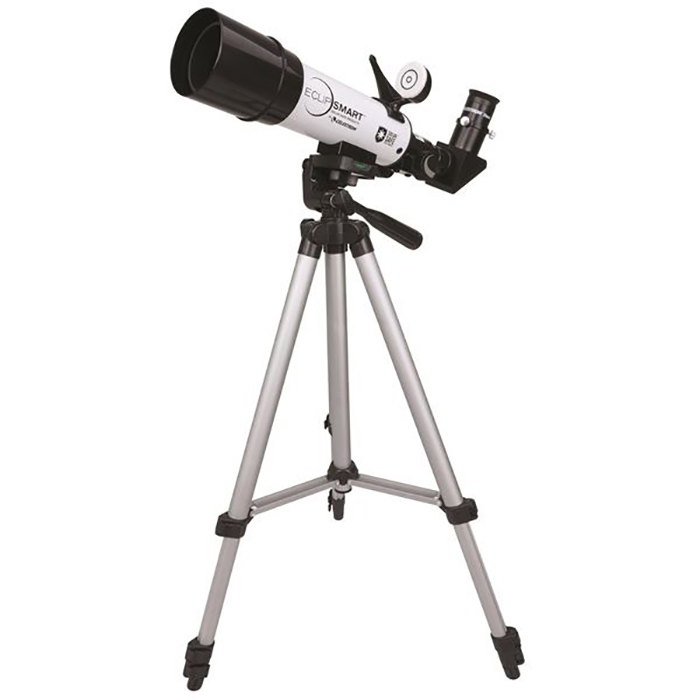
Best Solar Telescope for Advanced Solar Astronomers
The Coronado SolarMax III (SMIII) is a 70mm F/5.7 refractor with 60mm external hydrogen-alpha (H-α) filters, available in single-stacked (0.7Å) and double-stacked (0.5Å) bandpasses with 10mm or 15mm blocking filters. This telescope has a 400mm focal length, which can provide incredible views with the included Coronado Cemax 18mm Eyepiece or even better views with a dedicated astrophotography camera, framing up the Sun perfectly. The external etalon of the telescope works with a 10mm blocking filter situated in a 1.25” diagonal. With the diagonal, the tunable external etalon, and blocking filter, the telescope is capable of producing a
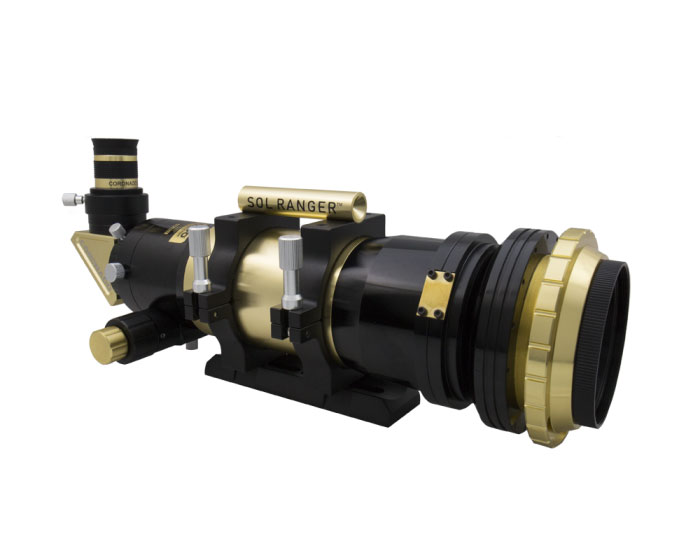
Best All-Around Solar Telescope
The Coronado PST has been a cornerstone solar telescope for years. It’s easy to use for a beginner while delivering eye-watering image quality for those with higher-end equipment. Its lightweight, affordable nature makes it one of the most in-demand solar telescopes on the market. While it has an objective of 40mm, make no mistake, this telescope can deliver incredible views in a tiny package.
The internal elation filter is built to allow a small wavelength of light, just enough to view the Sun’s stellar nature in hydrogen alpha. You will be able to see surface granulation the size of continents, sunspots larger than the Earth, and prominences that dwarf even the mighty Jupiter, all in a package that weighs less than 4 lbs and can fit on any basic photo tripod. For solar eclipse chasers, this telescope is for you! You can easily fit this telescope on a plane or in your backpack to view the next solar eclipse.
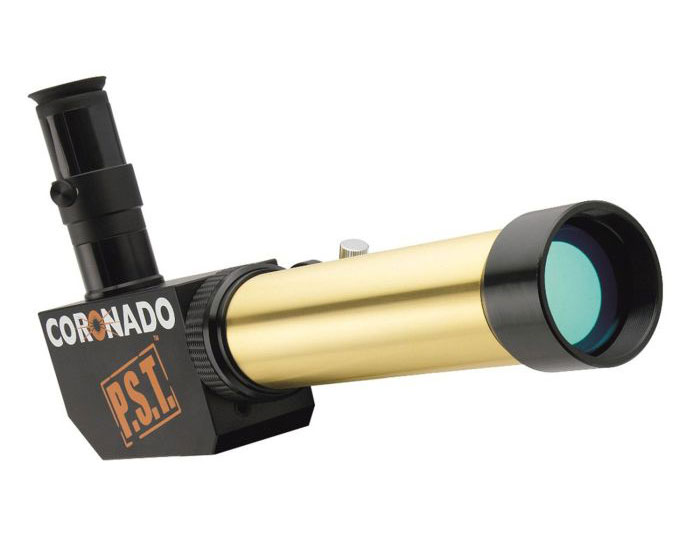
The Sun offers a captivating spectacle for those who venture to explore it through the lens of a solar telescope. From the mesmerizing photosphere with its sunspots and solar granules to the dynamic chromosphere displaying large prominences, the layers of the Sun reveal a complex and ever-changing celestial body.
Whether you are a novice gazing at the Sun's surface for the first time or an experienced astronomer delving into the intricate details of solar phenomena, the right solar telescope awaits. As we continue to unveil the mysteries of our celestial neighbor, these telescopes serve as gateways to a deeper understanding of the Sun's majestic beauty and dynamic behavior.

Interested in learning more about solar telescopes, solar eclipses, or just observing the sun in general? Check out our Astronomy Hub!











